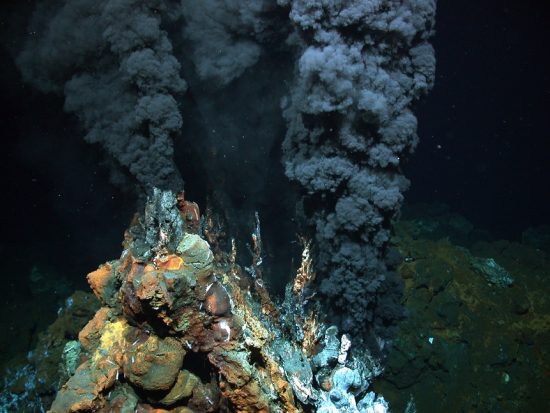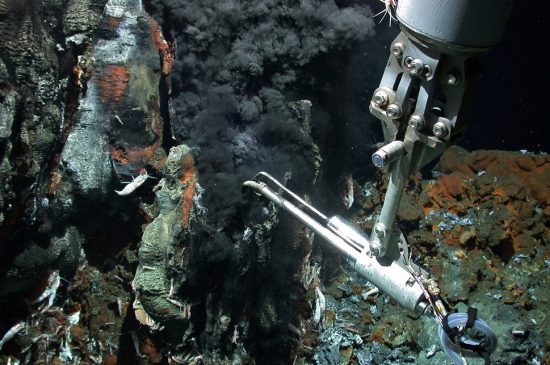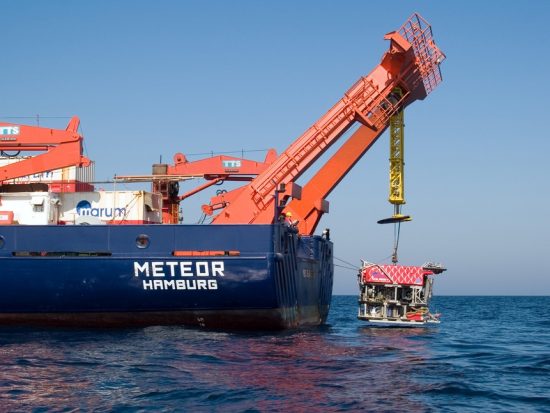




Researchers investigate hydrothermal vents on research vessel's 30th anniversary cruise
Welcome to the world of the hydrothermal vents, where organisms frolic
in total darkness within an apparently hostile environment, in waters
hotter than 400 degrees Celsius. Scientists have long considered such
places to be possible locations where life on Earth originated.
It is also here, amid the unique life forms, that plumes of hydrogen
sulphide are emitted from the vents. Bacteria that had existed for
millions of years, forming the basis of the food cycle, can be found
here. Yet, despite this, they remain poorly understood.
Now, on a special 30th anniversary cruise of the research vessel Meteor
to the Azores archipelago, a research team headed by geologist
Christoph Beier of the University of Erlangen-Nürnberg, is currently on
board. Aiding in their research is the ROV (remote operated vehicle)
MARUM-QUEST, which will retrieve samples from the vents.
Built in 1986, the Meteor was commissioned for the purpose of
scientific research. It has travelled the world's oceans for 30 years,
enabling researchers to study the ocean, climate and marine creatures
in the water and at the seafloor. Its pursuits have taken it to the
Atlantic, eastern Pacific, West Indian Ocean, the Mediterranean and the
Baltic Sea. In its 30 years of service, it has travelled 1.3 million
nautical miles and served as home to 9,800 scientists.
The construction of the ship was funded by the Federal Ministry of
Education and Research (BMBF). Today, as its owner, it contributes to
30 percent of the cost of the ship’s operations. The remaining 70
percent is handled by the German Research Foundation (Deutsche
Forschungsgemeinschaft). The Meteor’s home port is Hamburg.
“Seas and oceans have an enormous significance for the future of our
planet,” said Federal Research Minister Johanna Wanka in German. “This
enables scientists to conduct marine research of international
standards within a modern research infrastructure. That is why we
continuously renew the German research fleet.”
Sixteen ships are being showcased as part of Science 2016/2016 on the
website (www.wissenschaftsjahr.de). Using the motto “Discover.
Benefit. Protect. (German: Entdecken. Nutzen. Schützen)”, the BMBF is
inviting the public to attend Open Ship events to get an insight into
their research work, as well as to visit the institution’s marine
research-themed blogs about the life and work on board the vessels.
Further information: www.bmbf.de
Video: https://www.youtube.com/watch?v=xywO4j7k2g8
Interesting stuff:
When seawater goes underground
High concentrations of gold found in Iceland's geothermal systems
 Mares
Mares 23rd July 2016
23rd July 2016 Azores, Portugal
Azores, Portugal